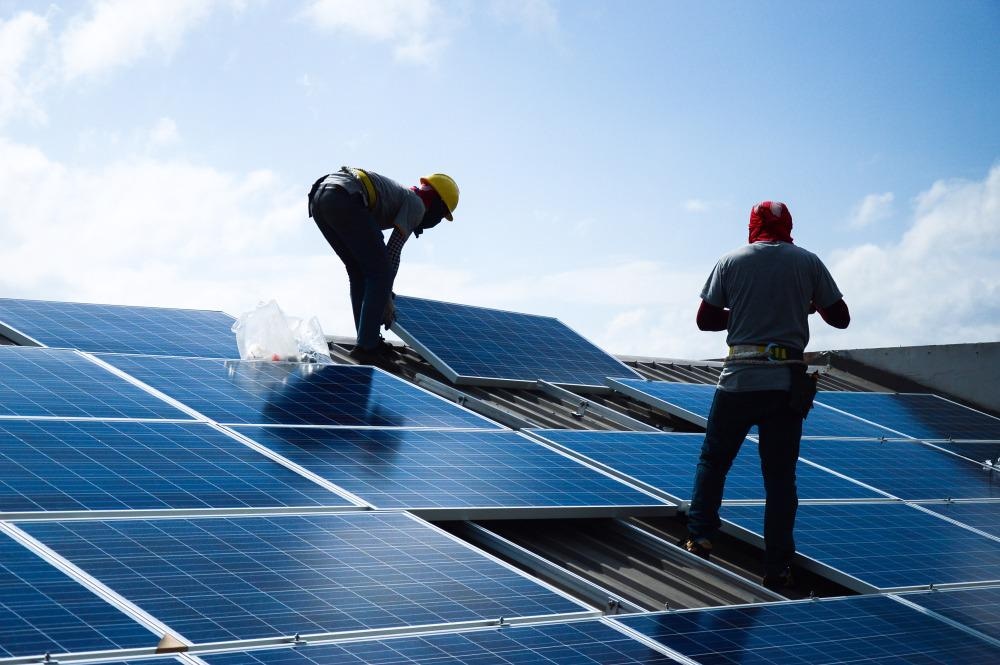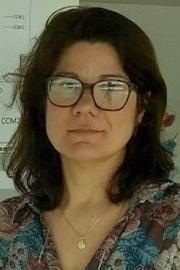AZoM speaks to Prof. Dr. Iolanda Duarte and MSc. Juliane Moura about their research that considers the presence of extremophile microbiota on photovoltaic panels and their potential as sources of useful biomolecules.
Please could you introduce yourselves, your background, and how you came to be involved with this research?
Prof. Dr. Iolanda Duarte
I am a professor, masters and doctorate supervisor of the Federal University of São Carlos/Brazil and leader of the research conducted at the Laboratory of Applied Microbiology (LMA) at the campus located in Sorocaba/Brazil since 2008, with post-doctoral training by the University of Valencia /Spain. My doctoral and master's projects were both focused on applied microbiology of civil/sanitation engineering and algae production for animal feeding. My lab also conducts R&D for a global player of the biocides market, besides other scientific investigations on the framework of international cooperation. Readers can follow our communication channel on Instagram: @lma.ufscar.
This bioprospection of solar panels was already known to me and the two other co-authors of this work. We then invited Julianne Moura to join us and conduct this kind of research in tropical conditions, a gap that was still to be addressed by the year 2020 according to our very best knowledge. Then, MSc. Moura started to investigate this theme as the main core of her Master's of science project.
Msc. Juliane Moura
I’m a qualified chemist and enthusiast of biotechnological sciences. My passion for biotechnology started about 3 years ago, when I had the opportunity to work in the chemical industry, focused on agricultural solutions in Brazil. Biotechnology is an exciting and innovative way to bring a friendly solution for agriculture to farms and is also in concordance with the achievement of a more sustainable world. When I was immersed in that project, I knew that the biotechnological vision of the world was also my vision of the world, and I decided to become a part of it.
I wished to contribute to making this world a better place to live. This research about photovoltaic panels was proposed right after this decision and this experience. It was part of my Masters's degree project. Based on previous studies about the microbial ecology of solar panels in Mediterranean and Polar climates, we were interested to know what kind of life forms lived on photovoltaic panel surfaces, an extreme place on the roof of our homes, from a tropical environment under an ecological and biotechnological perspective.
How significant are photovoltaic panels to society moving forward?
Photovoltaic panels are elements that could be useful towards maximization of distributed electric energy generation goals, searching for the optimal solar energy usage worldwide. Notoriously, all of this worldwide progress ought to be constrained by a priori rigorous life cycle assessment analysis, as with all other technological solutions available in the market
One of the crucial factors in increasing access to sustainable solar energy is enhancing the efficiency that we have today, as highlighted by a United Nation report. Improving energy efficiency requires more investment into the construction of new energy production plants, but also requires avoiding energy losses from the plants that are already in operation today. This last point is underestimated. We (all authors) think that the bioprospection photovoltaic panels could perhaps offer some insight on how to prevent biofilm formation and dust accumulation on the glass surface of photovoltaic cells, as a way to reduce energy loss and improve the efficiency of solar energy conversion.

Image Credit: surasak jailak/Shutterstock.com
What are solar panels typically made of? How does this material promote the growth of microorganisms?
Typically, including in our study, they are based on crystal lattices of silicon atoms endowed with temperate cover glasses. Their main feature regarding microbiology, for our purposes, is to offer static and stable support for biofilm formation.
Has this been observed in any other materials?
This kind of biofilm formation is observed in a huge variety of surfaces like concrete buildings, sculptures, leaves, and natural rocks, among other examples.
Does the presence of these extremophiles affect the functioning of photovoltaic cells?
Yes, because the resulting biofilms partially prevent solar radiation conversion to electric energy, besides accelerating dust accumulation, called soiling phenomena, that favors even more biofilm formation in a kind of positive feedback loop effect.
In our study, we observed that photovoltaic panel surfaces were rich in pigmented microorganisms. This is a specific concern because although solar energy covers a wide range of the electromagnetic spectra, the solar energy distribution is at a maximum in the range of visible light at the ground level.
For this reason, photovoltaic panels are more effective in the visible wavelength range than in other regions of the solar spectrum, which is exactly the wavelength that pigmented microorganisms interact in, being capable of absorbing and scattering visible light and hence changing the incoming radiation in photovoltaic cells.
This reduces their intensity, which negatively affects the efficiency of energy conversion. Moreover, some biofilms were reported to have sanitizers and antimicrobial resistance, which could lead to issues when using conventional cleaning processes.
What might this mean for the materials industry? Is this something that it should be wary of, especially when many are hoping for a shift towards solar panel energy?
Our main focus is on microbiology, but prospectively our research offers information about related microorganisms that could partially support the development of new technologies for surface coating (of the glass cover). It could also provide new strategies for biocide design and delivery worldwide, due to similarities with cases of study in temperate and polar climatic regions, but with detailed support concerning solutions for tropical region cases.
How can this research be used for biotechnical applications? For example, the development of sunscreens, pigments, or bio detergents?
Microorganisms exposed to solar radiation are constantly threatened by oxidation processes. To thrive under these stressful conditions, these microorganisms produce specialized metabolites (biomolecules). To do this, multiple antioxidant systems capable of “scavenging” oxidative species that cause cell damage, especially to proteins, are very important.
Carotenoids and scavenger compounds, responsible for pigmentation properties, are one of the strategies that can help microorganisms overcome DNA damage and protein oxidation caused by direct and indirect UV radiation products. In this case, we can retrieve these specialized metabolites that these microorganisms use to survive and apply them to many biotechnological applications. The metabolite production will depend on the species and how its metabolism will work under stressful conditions.
Further Reading: The Future of Thin Films and Lasers in Photovoltaics
Some kinds will produce pigments, that we can use to produce natural dyes, sunscreens (because of antioxidant properties), etc. Additionally, some of these microorganisms could produce thermostabletensoactive agents that could be helpful as components of products for cleaning many devices, including photovoltaic panels.
How could these findings be utilized in material development? Can materials be made microbiota-resistant? Should they be?
So far, our perspective is that yes, they should be. We think there is room for materials development that could somehow minimize this biofilm formation, although not totally avoid it, because biofilm formation avoidance is a very hard problem to deal with; we are open to collaborative efforts in this area.
Do you think this research will impact solar panel management strategies? How?
Our research is mainly focused on using photovoltaic panels for bioprospection and discovery of useful biomolecules, but if we perhaps achieve the development of a tensoactive agent with biocide activity (based on these isolates) it could potentially help the management of solar panels.
What is personally the most exciting aspect of this new research to you?
To deal with microorganisms of extreme environments (extremophiles) is exciting for us because they are archetypical of the ‘adapt to survive’ concept.
What are the next steps for this subject matter? Do you hope to conduct further research around the microbiota found, or the implications for perovskite cell materials?
The next step is to evaluate the related biomolecules’ capability to attack this biofilm formation as a kind of mandatory step. We hope to conduct further research around the microbiota found and contribute somehow to the development of improved cover materials and their coatings, including perhaps a perovskite cell-driven photovoltaic solution/design.
Where can readers find more information?
https://academic.oup.com/femsle/article/368/16/fnab105/6350555?searchresult=1
https://www.eurekalert.org/news-releases/934353
https://agencia.fapesp.br/photovoltaic-panels-are-home-to-microorganisms-with-potential-biotech-applications/37265/
https://agencia.fapesp.br/los-paneles-solares-albergan-microorganismos-que-poseen-potencial-de-aplicacion-biotecnologica/37279/
https://bv.fapesp.br/en/pesquisador/40939/iolanda-cristina-silveira-duarte/
About MSc. Juliane B. Moura and Prof. Dr. Iolanda C.S. Duarte
 Msc. Juliane Moura has a master's in biotechnology and environmental monitoring from the Federal University of São Carlos (UFSCar-Brazil). She has an interest in microbial ecology and bioprospection of microorganisms to applied microbiology purposes. Prior to her master's degree, she received her B.S in Chemistry from the University of Sorocaba (UNISO-Brazil). She worked in the chemistry field for 3 years and has knowledge of oxidative stress suppression of natural extracts and silicone additive technologies for chemical formulation. Afterward, she worked in the biotechnology field in the research development of agriculture solutions in bionematicide and bio fungicide formulations, microbial ecology and bioprospection of extreme environments, and microalgae biomass optimization for bioproducts harvesting.
Msc. Juliane Moura has a master's in biotechnology and environmental monitoring from the Federal University of São Carlos (UFSCar-Brazil). She has an interest in microbial ecology and bioprospection of microorganisms to applied microbiology purposes. Prior to her master's degree, she received her B.S in Chemistry from the University of Sorocaba (UNISO-Brazil). She worked in the chemistry field for 3 years and has knowledge of oxidative stress suppression of natural extracts and silicone additive technologies for chemical formulation. Afterward, she worked in the biotechnology field in the research development of agriculture solutions in bionematicide and bio fungicide formulations, microbial ecology and bioprospection of extreme environments, and microalgae biomass optimization for bioproducts harvesting.

Prof. Dr. Iolanda Duarte is a biologist; she is a full professor, master and doctorate supervisor of the Federal University of São Carlos/Brazil and leader of the research conducted at the Laboratory of Applied Microbiology (LMA) at the campus located in Sorocaba/Brazil since 2008, with post-doctoral training by the University of Valencia, Spain. Her doctoral and master's projects were both focused on applied microbiology of civil/sanitation engineering and algae production to feed animals. Prof. Duarte´s lab also conducts R&D for a global player of the biocides market, besides other applied microbiology related scientific investigations on the framework of international cooperation’s, which one can follow on our communications channel on Instagram:@lma.ufscar, Twitter: @duarteics, and on email: iolanda.at.ufscar.br.
Disclaimer: The views expressed here are those of the interviewee and do not necessarily represent the views of AZoM.com Limited (T/A) AZoNetwork, the owner and operator of this website. This disclaimer forms part of the Terms and Conditions of use of this website.